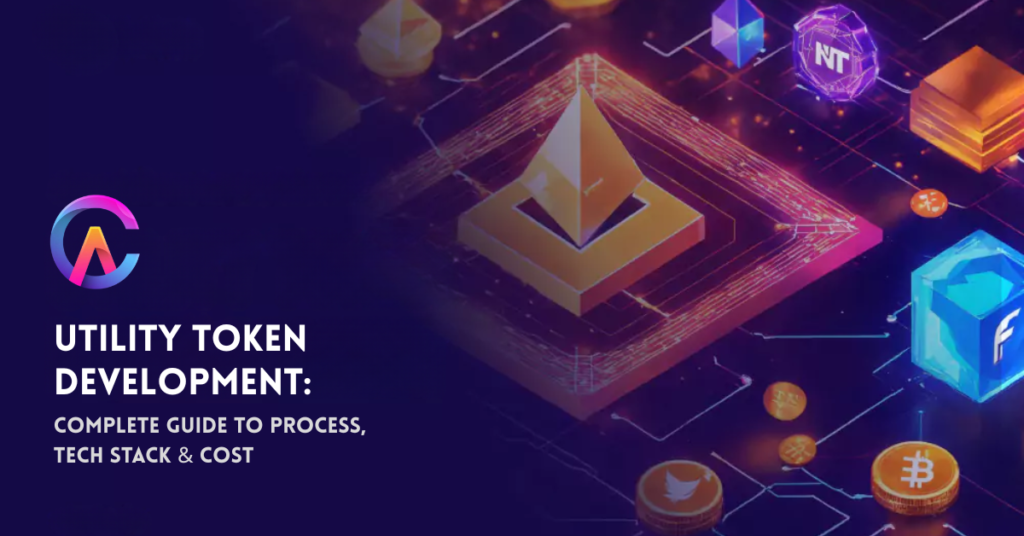What is Utility Token? A digital asset that unlocks access, benefits & Features
Read 7 MinA utility token is essentially a digital asset that serves as an access key within a blockchain ecosystem. It allows holders to use various products, unlock features, earn rewards, or engage in specific services, rather than signifying legal ownership in a company. These tokens are the driving force behind platform economies, enabling users to pay fees, access premium tiers, and utilize in app items or governance features, all while aligning user behavior with the network’s growth. They play a crucial role in many Web3 applications, exchanges, DeFi platforms, and gaming projects, acting as the fuel that powers the entire experience. What is a utility token in simple terms Utility tokens are crypto assets created on a blockchain that grant users access to specific products, services, or features within that project’s ecosystem, think of them as digital tickets, membership passes, or in app currencies. Unlike security tokens, which represent shares or legal ownership and are treated as regulated investments, utility tokens are primarily designed for functionality and usage, not for profit sharing or equity rights. Most utility tokens operate on smart contract platforms like Ethereum or other programmable chains, adhering to standards such as ERC20. This allows them to be stored in wallets, traded on exchanges, and easily integrated into decentralized applications (dApps). Their value typically reflects the platform’s usefulness, the demand for its services, and the anticipated future utility, rather than direct claims on the company’s cash flows. How utility tokens work under the hood Utility tokens originate from a smart contract that outlines the total supply, minting rules, transfer protocols, and any special functions like staking, burning, or access checks. Once the contract is deployed, the tokens are minted and can be distributed through various methods such as ICOs, IEOs, IDOs, airdrops, or in app earning mechanics, depending on how the project is launched. Inside the platform, the token is seamlessly integrated into various workflows. Contracts verify balances before allowing access to features or applying token based discounts to services. Users might need to hold or spend tokens to carry out actions like uploading data, claiming rewards, voting, or unlocking premium tools. Since everything operates on a blockchain, these access rules are enforced by code, transforming the token into a programmable permission system that controls features and aligns incentives. Core utilities access benefits and features Utility tokens can unlock a range of benefits depending on the project’s design. Here are some common use cases: Access to services: Users can pay or stake tokens to utilize essential services like storage, computing, bandwidth, or API access. For instance, Filecoin is used for decentralized storage, while Enjin facilitates in game asset operations. Fee discounts and premium tiers: Many exchanges and DeFi platforms offer trading fee discounts or better interest rates to users who hold or stake their native utility tokens. This is common with various centralized exchange (CEX) tokens and DeFi governance hybrids. In app currencies and assets: Games and metaverse environments often use utility tokens as the primary currency for purchasing items, upgrades, and experiences, fueling internal economies and secondary markets. Rewards and incentives: Tokens are awarded for actions that benefit the network, such as providing liquidity, validating data, watching ads, or contributing content. This aligns users with the growth of the protocol, as seen with Basic Attention Token (BAT) and other attention based tokens. Governance and feature voting: Some utility tokens come with governance rights, allowing holders to vote on protocol upgrades, fee structures, or feature roadmaps. However, pure governance tokens are typically considered a separate category. In practice, many modern tokens are hybrids that combine access, discounts, governance, and sometimes revenue sharing. Yet, the fundamental concept remains focused on utility within the ecosystem rather than legal ownership. Utility tokens vs other token types In the broader world of digital assets, it’s important to differentiate utility tokens from other key categories. Cryptocurrencies These are general purpose digital currencies like Bitcoin, primarily used as a medium of exchange or a store of value, without being tied to any specific app features. Security tokens These tokens represent shares or claims on real world assets, companies, or revenue streams. They are regulated as securities, which means they come with investor protections and disclosure requirements. Governance tokens These tokens are mainly used for voting on protocol decisions and DAO proposals. They can sometimes overlap with utility tokens when they also provide access to certain features. Utility tokens These tokens offer functional access to a product or service within a specific ecosystem, like paying fees or unlocking premium options. However, they typically don’t provide any equity rights. Regulators focus on actual behavior rather than just labels. So, a utility token that’s marketed as an investment with profit expectations might still be classified as a security in some jurisdictions. Benefits and risks of utility tokens When crafted thoughtfully, utility tokens can really enhance product ecosystems. They create a natural demand for services, align user interests with the growth of the network, and pave the way for innovative business models like token gated communities and decentralized billing based on usage. By utilizing smart contracts, tokens can minimize the need for intermediaries, allowing payment discounts and rewards to flow directly between users and the protocol. That said, there are significant risks to consider. Poorly designed tokenomics, inflation, harmful emissions, or vague utilities can transform a token into mere speculation, lacking any real value. Users might start viewing utility tokens as investments, hoping for price increases, even when the teams behind them clearly state that’s not their purpose. This can lead to volatility and increased regulatory attention. Additionally, bugs in smart contracts and inadequate security measures can put balances and access rights at risk. It’s crucial for projects to clearly define real utilities and avoid launching tokens just to raise funds without a solid long term product strategy. Real world examples of utility tokens Several well known projects highlight how utility tokens can drive various sectors: Filecoin (FIL) This token is used to buy and sell decentralized storage













